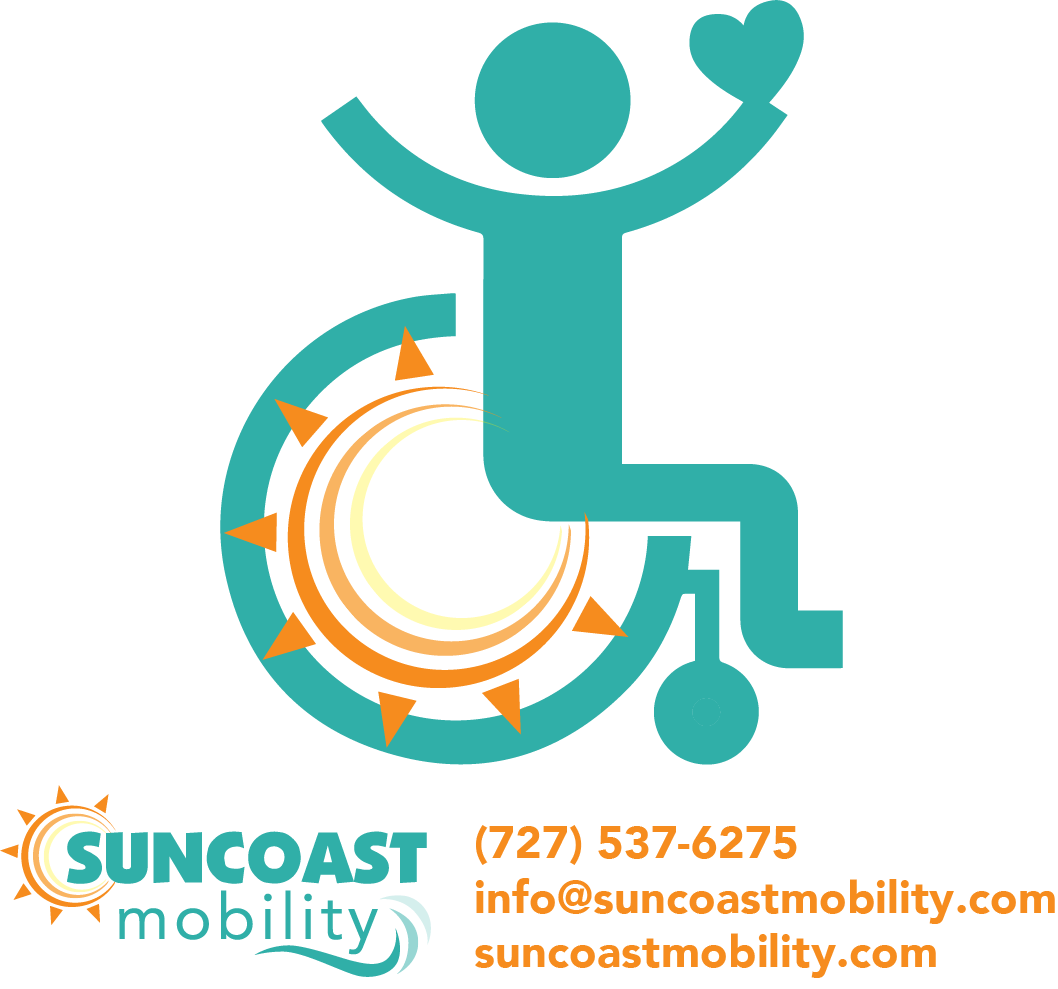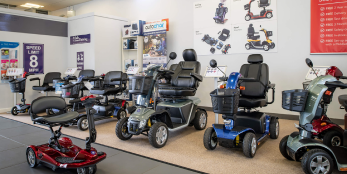Table of contents
Power Wheelchairs 101: Key Terms
Shopping for a power wheelchair online can often feel overwhelming, especially if you’re not familiar with the technical terms commonly used in product descriptions. These devices are crucial for providing independence, mobility, and freedom to people with limited physical capabilities. However, selecting the right one for your needs requires a solid understanding of the features and specifications, which can vary widely between models. This guide will break down essential terminology and features you will encounter during your shopping experience, helping you make a more informed and confident decision.
Why Terminology Matters
When browsing online for a power wheelchair or mobility scooter, you're likely to encounter a lot of technical jargon. Terms like "rear-wheel drive," "battery type," or "ground clearance" can be confusing if you're unfamiliar with their meanings. However, understanding these key terms is critical because:
It allows you to compare models more effectively.
You can identify features that align with your specific daily needs, lifestyle, and physical condition.
You can avoid purchasing a chair that doesn't suit your environment or physical abilities, ensuring a better overall experience.
Having a solid grasp of these terms helps ensure that the wheelchair or scooter you purchase meets your mobility requirements and enhances your quality of life. Let’s take a deeper dive into the key terms and specifications that are essential when shopping for power wheelchairs and mobility scooters.
1. Drive Type
The drive type refers to the placement of the motorized wheels on the power wheelchair. The configuration of these wheels affects various aspects of the chair’s performance, including stability, maneuverability, and suitability for different environments.
Rear-Wheel Drive (RWD): This configuration places the drive wheels at the back of the chair. It tends to provide better speed and stability at higher speeds, making it an excellent choice for outdoor use. However, the turning radius can be larger, which might make it more challenging to maneuver in tight indoor spaces.
Mid-Wheel Drive (MWD): In this configuration, the drive wheels are located in the middle of the chair. MWD chairs are renowned for their extremely tight turning radius, making them ideal for navigating narrow hallways or small indoor spaces. However, they may not perform as well on uneven terrain outdoors.
Front-Wheel Drive (FWD): The drive wheels are positioned at the front of the chair in FWD models. This provides superior traction, especially on uneven surfaces and slopes, making them suitable for outdoor use. However, they may have a slightly larger turning radius compared to MWD models.
Key Consideration: Select the drive type based on where you'll use the chair most often. For indoor use, MWD may be your best option. For outdoor or rough terrain use, consider RWD or FWD.
2. Turning Radius
The turning radius refers to the smallest circular turn that a power wheelchair can make. This is an essential consideration when it comes to maneuvering the chair in tight spaces like hallways, bathrooms, or kitchens.
A smaller turning radius (around 20–25 inches) is ideal for indoor use, particularly in compact spaces.
A larger turning radius (over 30 inches) is typically suited to outdoor environments where space isn’t as limited.
Key Consideration: If your living situation involves navigating tight spaces frequently, such as narrow doorways or crowded areas, a chair with a small turning radius is highly recommended.
3. Travel Range
Travel range is the distance that a power wheelchair can travel on a single battery charge. This is crucial to know, especially if you intend to use the wheelchair for errands, work, or other outings. The travel range can vary significantly between models and depends on several factors, such as battery type, terrain, user weight, and speed settings.
Short-range chairs typically offer a travel range of 6–10 miles per charge, ideal for brief outings or indoor use.
Mid-range models can provide between 10–18 miles per charge, making them suitable for errands or day-to-day activities.
Extended-range models offer 20+ miles per charge, perfect for those who need a power wheelchair for longer distances or extended outdoor excursions.
Key Consideration: Evaluate your daily needs and how far you typically travel. For example, if you run errands often or require long trips, you may want a model with a longer travel range.
4. Battery Type
The battery type plays an essential role in the overall performance, charging time, and portability of a power wheelchair. There are two common battery types:
Sealed Lead Acid (SLA): SLA batteries are often more affordable and reliable, but they tend to be heavier and take longer to charge. These are suitable for occasional users who don’t need the chair for long periods.
Lithium-ion (Li-ion): Li-ion batteries are lighter, charge faster, and last longer than SLA batteries. Although they are more expensive, they are ideal for daily or heavy use, offering better overall performance.
Key Consideration: If you prioritize portability or need a power wheelchair for frequent, extended use, lithium-ion batteries might be worth the extra investment.
5. Weight Capacity
The weight capacity refers to the maximum weight that a power wheelchair can safely support. Different models can accommodate varying user weights.
Standard chairs usually support weights of up to 250–300 lbs.
Heavy-duty models can support users weighing between 400–600 lbs or more.
It is important not to exceed the weight capacity, as doing so can compromise the power wheelchair's performance, stability, and battery life.
Key Consideration: Always check the manufacturer's specifications and ensure you select a model with a weight capacity that comfortably supports your body weight.
6. Chair Weight and Portability
The weight of the power wheelchair is a significant factor, especially if you need to transport it frequently or if you have limited strength. Power wheelchairs can vary considerably in weight.
Lightweight models (under 100 lbs) are easier to fold, lift, or disassemble. These are ideal for users who travel often or need to store the chair in a car or other small spaces.
Full-size models (weighing between 100–200 lbs) tend to be more durable and feature-rich but may be more challenging to transport.
Some power wheelchairs come with foldable frames or quick-disassembly features, making them more portable.
Key Consideration: If portability is essential, choose a model designed for easy transport, or one that can be disassembled to fit in your vehicle.
7. Seat Size and Adjustability
Comfort is crucial, especially if you plan to use your power wheelchair for extended periods. Power wheelchairs offer various options for seat sizes and adjustability:
Seat width and depth: Choose a chair that accommodates your body type. An improper seat size can cause discomfort or even lead to pressure sores over time.
Adjustable armrests and footrests: These features allow for better customization, providing improved comfort during use and facilitating easier transfers in and out of the chair.
Reclining or elevating seats: Some models feature reclining or elevating seats to reduce pressure and offer relief for users who require frequent position changes.
Key Consideration: Make sure the chair’s seat can be adjusted to suit your body. A comfortable seat with proper support can reduce fatigue and improve long-term usability.
8. Joystick Controller
The joystick controller is the primary input device for most power wheelchairs. It controls the chair’s movement, including forward, reverse, and turning directions.
Most chairs have a joystick mounted on the armrest.
Some models provide alternative input methods for users with limited hand dexterity, including sip-and-puff controls, head controls, or touchpads.
Key Consideration: Ensure that the joystick or alternative control is intuitive and easy for you to operate. Test the device if possible or look for detailed product demos and user reviews.
9. Ground Clearance
Ground clearance refers to the height between the bottom of the chair and the ground. This measurement is critical, especially if you plan to use the power wheelchair outdoors or on uneven terrain.
Low clearance (less than 2 inches) is suited for smooth indoor surfaces, but it may struggle with curbs or small obstacles.
Higher clearance (2–4 inches) is better for navigating sidewalks, ramps, and rough outdoor terrain.
Key Consideration: If you plan to use the wheelchair outside or in areas with uneven surfaces, opt for a model with higher ground clearance.
10. Suspension System
A suspension system is designed to absorb shocks and vibrations, providing a smoother ride. It’s especially important for users who travel over bumpy or rough terrain.
Basic suspension systems may include spring or foam-based cushioning, offering a comfortable ride on flat surfaces.
Advanced suspension systems feature independent wheel suspension or shock absorbers, offering superior comfort on rugged terrain.
Key Consideration: If you plan to use your power wheelchair for outdoor activities or travel over rough terrain, a high-quality suspension system will improve comfort and reduce user fatigue.
11. FDA Class II Medical Device
Power wheelchairs are often classified as FDA Class II medical devices, meaning they meet strict regulatory standards for safety and performance. This classification is crucial for individuals who wish to seek insurance or Medicare reimbursement.
Key Consideration: If you plan to use insurance or Medicare to cover the costs, verify that the chair is classified as an FDA Class II medical device.
12. Terrain Compatibility
Not all power wheelchairs are designed to handle the same types of terrain. There are three general types:
Indoor models: These are typically lightweight, compact, and designed for smooth, even surfaces.
Outdoor models: These are built with larger wheels, higher clearance, and superior suspension to handle rougher surfaces.
Hybrid models: These offer a balance between indoor maneuverability and outdoor durability.
Key Consideration: Think about your primary use case. If you spend a lot of time outdoors, you may need a power wheelchair that’s built for rugged conditions.
13. Transport Options
If you need to transport your power wheelchair by car, plane, or public transportation, the transportability of the chair is crucial.
Travel chairs are typically lightweight, foldable, and even airline-approved.
Disassemblable units can be taken apart and stored in the trunk of a car.
Lift-compatible models may require a vehicle lift or ramp for easy transport.
Key Consideration: Ensure that the power wheelchair can be transported easily based on your mode of travel.
Final Shopping Tips
When shopping for a power wheelchair online, it’s important to take a thorough and thoughtful approach to ensure you choose the best model for your needs. Since you can’t test the chair in person, begin by watching demo videos to see how the wheelchair functions in real-life scenarios—this helps you understand maneuverability, speed, and folding features. Be sure to read customer reviews thoroughly , as they often reveal insights into long-term performance, comfort, and reliability that aren’t obvious from product descriptions. It’s also essential to check warranty details, return policies, and service options to protect your purchase and provide peace of mind. Before finalizing your decision, measure your home to make sure the wheelchair can easily pass through doorways and navigate your space. Lastly, consult with a mobility specialist or occupational therapist for personalized guidance, especially if you have specific medical or mobility needs.
Key things to remember:
Watching demo videos
Read customer reviews thoroughly
Check warranty details, return policies, and service options
Measure your home
Consult with a mobility specialist or occupational therapist
Conclusion
In conclusion, understanding the wide array of features, specifications, and terminology associated with power wheelchairs is essential for making an informed and confident purchase. Each user’s lifestyle, environment, and mobility needs are unique, and selecting a wheelchair without fully understanding the technical details can result in a frustrating or even unsafe experience. By becoming familiar with terms like drive type, turning radius, travel range, and battery type, shoppers are better equipped to find a model that not only meets their daily requirements but also enhances their quality of life. This foundational knowledge also helps users avoid costly mistakes and ensures their investment provides long-term satisfaction and usability.
Ultimately, choosing the right power wheelchair is about more than just price or appearance—it's about matching the equipment to your specific physical needs, routines, and mobility goals. From portability and terrain compatibility to control systems and seat comfort, every feature plays a role in determining how well a wheelchair will support your independence and well-being. By taking the time to research, compare options, and consult with healthcare professionals when necessary, you can confidently navigate the online marketplace and select a power wheelchair that empowers you to move through life with comfort, safety, and freedom.








